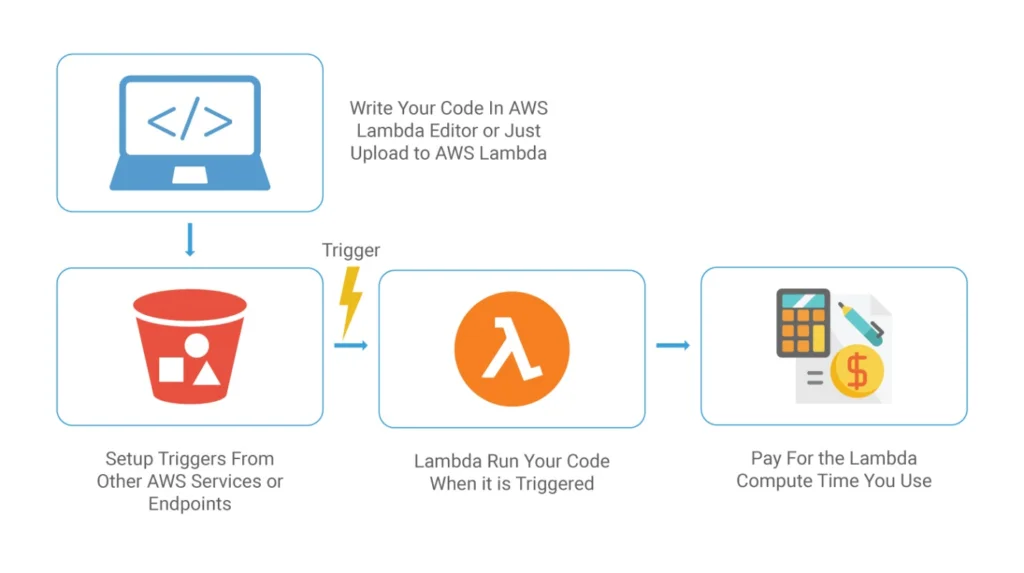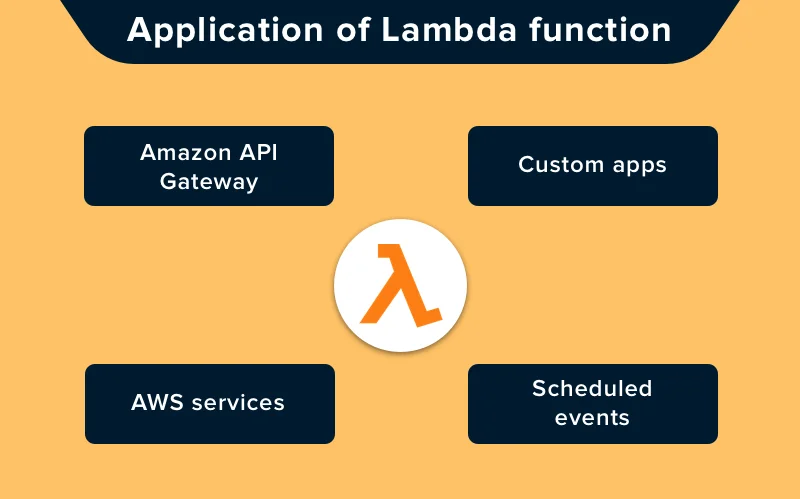Blog
AWS Serverless Architecture(AWS Lambda)
What is Serverless Architecture?
Serverless Architecture is a way to develop and run applications and services without managing the infrastructure. It is an execution model where cloud providers (like AWS, Azure or Google Cloud) executes a piece of code by allocating the resources dynamically. The application will run on servers but it will be managed by AWS.
The developers can focus on the code development, without worrying about the servers. Serverless architecture increases agility and innovation by shifting operational work to AWS. It eliminates the management of infrastructure tasks like provisioning, scaling, managing databases, applications and storage systems.
Serverless Architecture is nothing but the evolution of the Platform as a service (PaaS). In Serverless Architecture, applications depend on either using Backend as a Service (BaaS) or running custom code in containers under Function as a Service (FaaS).
BaaS (Backend as a Service)
Serverless was previously used to describe applications that incorporate third-party, cloud-hosted services to manage server-side logic and state. These applications are defined as serverless because the third-party service providers implement required functionality, provide server-side logic and manages internal states.
FaaS (Function as a Service)
In FaaS, the applications run in ephemeral containers that are event-triggered and are fully managed by the third party. AWS Lambda is one of the most famous Function as a Service platform in the market. It hosts bits of code which can be executed as per the requirement. Here, pieces of code with rules are written. These rules trigger the user’s application whenever needed. The user should not bother about the server since the code executes itself.
Why enterprises should shift from server to serverless architecture?
To make an application run on the server, enterprises need to update the server regularly, buy OS licenses, maintain its uptime, keep a check on its security and manage its scaling as per the requirement. Managing all these tasks becomes exhausting. Also, the cost of maintaining the server is high as compared to the cloud. So, shifting to a serverless architecture seems a better option.
Even if companies use a virtual server, provided by a cloud provider like Amazon or Microsoft, there is still a requirement for management of the operating system and other web server software processes. Whereas, in serverless, developers are free to focus on code without worrying about the servers. So switching to serverless architecture would serve great benefits (discussed later in the article).
How Serverless Architecture Works?
From monolithic to serverless architecture via microservices, servers have come a long way. In Serverless architecture, one can use cloud compute along with the API and storage. AWS Lambda is used to run functions in parallel containers that can be scaled separately. AWS Lambda is the backbone of serverless architecture. With the launch of Lambda, AWS just outgrows itself.
AWS Lambda provides compute power in serverless architecture, but along with it, APIs, storage and database are also important. For now, we will focus on Lambda and its role in Serverless Architecture.
How AWS Lambda Works?

AWS Lambda is a serverless framework of EC2 short term container that uses this code partly. This framework provides engineers with access to computing power. It provides the engineers with full control over available work environment and computing resources. This service reduces the required time for receiving and loading of the new server.
Using AWS Lambda, the user can run code without provisioning any Infrastructure or servers. Lambda is also known as Lambda Functions. Lambda will run the code only when it is triggered. One can either upload the code to AWS or write the code in the Lambda in-line editor.
AWS Lambda is an event-driven computing model that offers competitive pricing. Lambda executes the code in response to the events. An event can be anything from a change in an S3 bucket to an update in a Dynamo DB table. Custom events generated by different devices are also considered as events. After an event trigger, Lambda automatically prepares to compute resources and runs the Lambda function or code.
Lambda is provision free, high scale compute offering based on functions. It helps the user to build event-driven systems that are reactive in nature. Lambda runs the copies of the function in parallel when there are simultaneous requests waiting for the response. Lambda scales automatically and precisely with the workload. Thus, saving the cost and minimizing the compute power. The server idleness reduces drastically with the help of AWS Lambda.

Lambda is used along with AWS API Gateway to offer services for serverless architecture. The data is stored in the S3 block and database is stored in the Dynamo DB. With the coordination of all these functions, AWS offers a seamless serverless architecture.
Benefits of AWS Lambda
Faster Development
Engineers can focus more on the product than infrastructure. They will focus on the logic and its implementation, without worrying about scaling and provisioning. This would result in faster product development.
Auto Scaling
This is one of the best features of AWS Lambda. It scales the server usage as per the requirement of the resources. Whenever the traffic increases on the website, Lambda increases the compute power to cope up with the flow. If a situation arises where the server is going to remain idle, then, at that time, Lambda reduces the compute space and saves the wastage of resources.
Simple Deployment
The AWS Lambda makes it easier to deploy and run the application. User has to upload his code or application and that’s it. Lambda will take care of the rest.
High Availability
Serverless applications have an inbuilt fault tolerance system. They also have a dedicated team which works round the clock to avoid any fault. So, the user gets high availability all the time as AWS keeps working.
Cost
The main and foremost concern of anyone is budget. Nobody wilsl be willing to pay a dime more than their current system if it isn’t worth it. So, to convince customers to shift to the serverless architecture, a robust system and a great support team are required.
The ‘pay as you go model’ of AWS is what makes it stand out from the crowd. Companies don’t have to buy or rent large servers for months. Instead, they can opt for the AWS services and save themselves from provisioning, scaling etc. From licensing, maintenance to patching, everything is handled by AWS.
The FaaS code will only be executed when it is called. This helps to reduce the cost by approx. 90% as compared to the physical/virtual servers.
